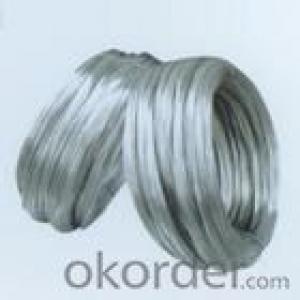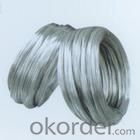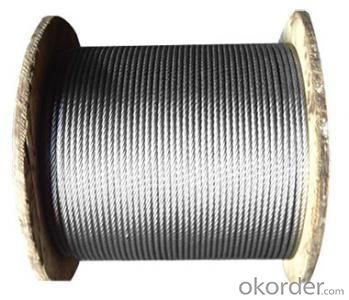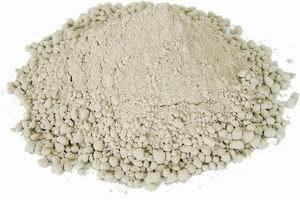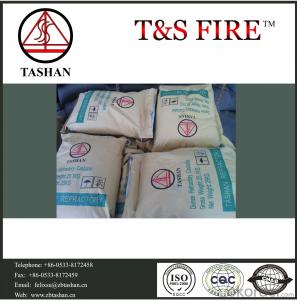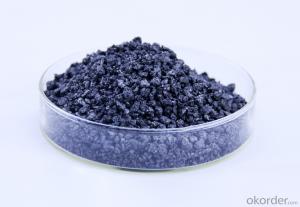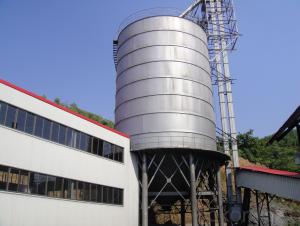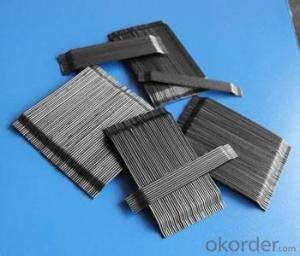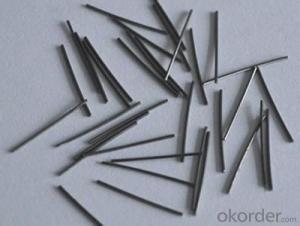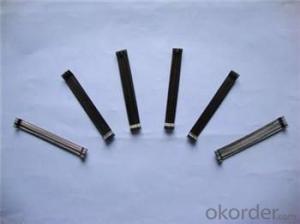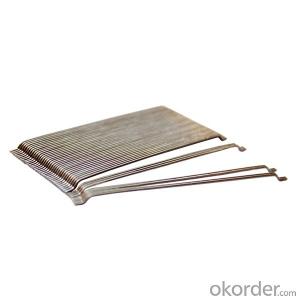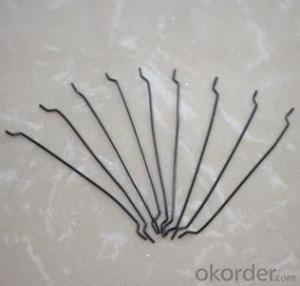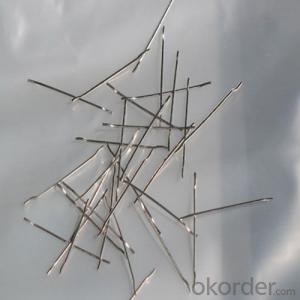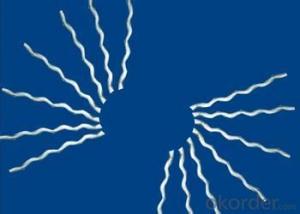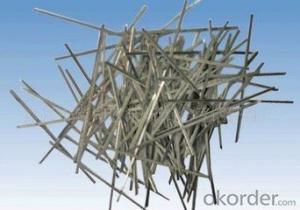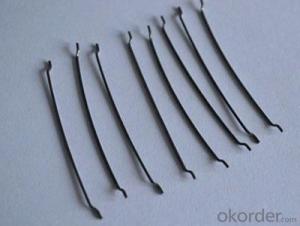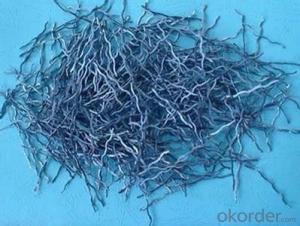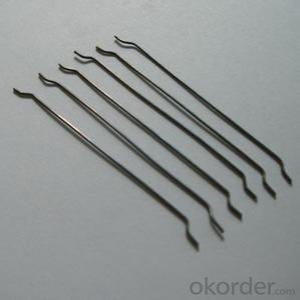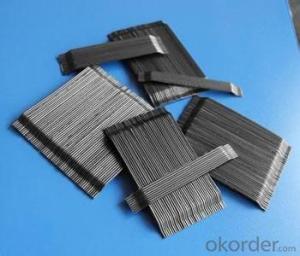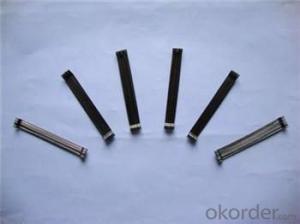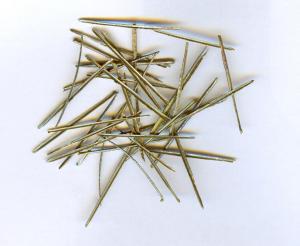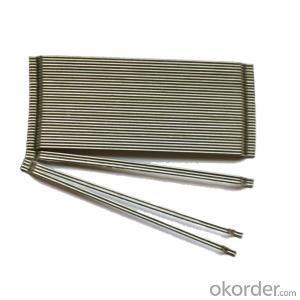Melt Extract Stainless Steel Fiber Ele Gl Wire 0.3mm Swg Gi Wire from CNBM China
- Loading Port:
- Tianjin
- Payment Terms:
- TT OR LC
- Min Order Qty:
- 1 m.t.
- Supply Capability:
- 10000 m.t./month
OKorder Service Pledge
OKorder Financial Service
You Might Also Like
Quick Details
Place of Origin: Tianjin, China (Mainland)
Surface Treatment: Galvanized
Galvanized Technique: Electro Galvanized
Type: Loop Tie Wire
Function: Baling Wire
Wire Gauge: 0.7-6mm
Business Type: Business Type
Raw material: Low carbon steel, Structural Carbon Steel,Q195
Elongation: 10% -12%
Zinc Coating: 10-270g/sqm
Standard: EN,BS,ASTM,GB
Packaging & Delivery
| Packaging Details: | 25kg or 50kg for each coil,According to customer's requirements |
|---|---|
| Delivery Detail: | 15 |
Product Description
| Business Type | Manufacturer | |||
| Wire Type | Zinc coated wire/Galvanized wire | |||
| Usage & Performance | Baling wire,Binding wire.weaving wire mesh, construction, handicrafts, express way fencing mesh, packaging of products, equipment, medical equipment, brushes, cables, | |||
| Wire Gauge | BWG 4-22 Galvanized Wire Diameter: 0.7-6mm | |||
| Zinc-plated | Hot dipped Galvanized or Electro Galvanized | |||
| Raw material | Low carbon steel, Structural Carbon Steel,Q195 | |||
| Tensile strength | >350 MPa | |||
| Elongation | 10% -12% | |||
| Zinc Coating: | 10-270g/sqm Electro Galv. Wire-Zinc coating: 10g-25g/m2, Hot Dipped Galv. Wire-Zinc coating: 40g-70g/m2/200g-270g/m2 | |||
| Standard | EN,BS,ASTM,GB | |||
| Certification | ISO9001:2000, CE, | |||
| Packing | Standard Coil Packing Unit | Weight | 25kg or 50kg for each coil | |
| Inner Dia. (φ/mm) | 200/400 | |||
| Inner Wrappage | Plastic film | |||
| Outside Wrappage | Woven bag or Hessian cloth | |||
| Export Bulk Packing | Export Packing | 500kg or 1,000kg for each coil | ||
| Customized Packing | 5kg to 500kg for each coil | |||
| Bulk Packing | 500kg/ Bulk coil | |||
| Inner and Outside Dia. (φ/mm) | According to customer's requirements | |||
| Wrappage | According to customer's requirements | |||
| Loading Quantity | 20’GP | 20-25 Tonne/Tonnes | ||
| 40’GP | 25-27 Tonne/Tonnes | |||
| 40’HQ | 25-27 Tonne/Tonnes | |||
| MOQ | 1 kg for trial order | |||
| Supply Ability | 10,000 Tonne/Tonnes per Year | |||
| Payment Terms | T/T or L/C at sight | |||
| Delivery Time | Within 15 days after receiving deposit or original L/C at sight | |||
| Remark | Customized order and specific requirements is available. | |||
- Q: How does melt extract stainless steel fiber improve the crack resistance of concrete?
- Melt extract stainless steel fiber improves the crack resistance of concrete by reinforcing the material and enhancing its tensile strength. The fibers act as a network within the concrete, distributing the stress and preventing the formation and propagation of cracks. This reinforcement also helps to improve the overall durability and lifespan of the concrete structure.
- Q: Can melt extract stainless steel fiber be used in fiber-reinforced cementitious composites (FRCCs)?
- Yes, melt extract stainless steel fiber can be used in fiber-reinforced cementitious composites (FRCCs). Melt extract stainless steel fibers are often chosen for their high tensile strength, corrosion resistance, and durability. When added to cementitious materials, these fibers can enhance the flexural strength, toughness, and crack resistance of the composite. They can also improve the overall performance and longevity of FRCCs in various applications such as structural elements, pavements, and precast products. The use of melt extract stainless steel fiber in FRCCs offers increased structural integrity, reduced maintenance requirements, and improved resistance to environmental factors, making it a suitable choice for reinforcing cementitious composites.
- Q: What is the effect of melt extract stainless steel fiber on the plastic settlement of shotcrete?
- The melt extract stainless steel fiber has a positive effect on the plastic settlement of shotcrete. It helps to improve the overall stability and reduce the plastic shrinkage cracking by reinforcing the concrete matrix. The fibers act as a reinforcement, enhancing the tensile strength and reducing the settlement and cracking of the shotcrete during the plastic phase.
- Q: Does melt extract stainless steel fiber improve the resistance to efflorescence in concrete?
- Yes, melt extract stainless steel fiber can improve the resistance to efflorescence in concrete. Efflorescence occurs when water-soluble salts are carried to the surface of concrete by moisture. These salts can react with carbon dioxide and form unsightly white deposits on the surface of the concrete. By incorporating melt extract stainless steel fiber into the concrete mix, the fibers can help to reduce the formation of efflorescence. The stainless steel fibers enhance the durability and performance of concrete by providing reinforcement and reducing the formation of cracks. This, in turn, helps to minimize the ingress of moisture and prevent the migration of salts to the surface of the concrete. Furthermore, the stainless steel fibers have a high resistance to corrosion, which means they can withstand exposure to various environmental conditions, including those that promote efflorescence. This resistance to corrosion ensures that the fibers continue to provide reinforcement and prevent the deterioration of the concrete over time. Therefore, melt extract stainless steel fiber can be an effective solution for improving the resistance to efflorescence in concrete, providing long-term durability and aesthetic appeal to the structure.
- Q: Is melt extract stainless steel fiber suitable for use in high-temperature applications?
- Yes, melt extract stainless steel fiber is suitable for use in high-temperature applications.
- Q: What is the effect of melt extract stainless steel fiber on the crack width in shotcrete?
- The use of melt extract stainless steel fiber in shotcrete has a significant effect on the crack width in the material. Stainless steel fibers are known for their high tensile strength and durability, making them an ideal reinforcement material for shotcrete applications. When added to the shotcrete mix, the stainless steel fibers are uniformly distributed throughout the material, creating a network of reinforcement that enhances its structural integrity. This reinforcement helps to reduce the crack width in the shotcrete, as the fibers effectively bridge the cracks and prevent their propagation. The melt extract stainless steel fibers act as micro-reinforcement within the shotcrete, increasing its ductility and resistance to cracking. This is particularly beneficial in areas with high stress concentrations or where cracking is a common issue, such as in tunnels, underground structures, or retaining walls. By reducing the crack width in shotcrete, the use of melt extract stainless steel fibers improves the overall durability and longevity of the material. It enhances its resistance to environmental factors, such as freeze-thaw cycles, chemical exposure, or mechanical loading, which can lead to crack propagation and subsequent deterioration. Furthermore, the reduced crack width in shotcrete also improves its aesthetic appearance, as it minimizes the visible signs of cracking on the surface. This is particularly important in architectural applications where the shotcrete is left exposed and serves as a decorative element. In summary, the addition of melt extract stainless steel fibers to shotcrete has a positive effect on the crack width in the material. It improves its structural integrity, durability, resistance to cracking, and overall aesthetic appearance, making it a valuable reinforcement option for shotcrete applications.
- Q: Can melt extract stainless steel fiber be used in tunnel lining applications?
- Melt extract stainless steel fiber is suitable for tunnel lining applications. It possesses high tensile strength, corrosion resistance, and durability, making it an ideal material for reinforcing tunnel linings. By enhancing the structural integrity and stability of the tunnel, it effectively prevents cracking, spalling, and other types of damage. Moreover, stainless steel fibers offer excellent fire resistance properties, which are crucial in tunnel environments. In summary, melt extract stainless steel fiber is a robust and resilient option for tunnel lining applications, capable of withstanding the challenging conditions commonly encountered in tunnels.
- Q: How does the fiber length affect the performance of melt extract stainless steel fiber in concrete?
- The performance of melt extract stainless steel fibers in concrete is significantly influenced by the length of the fibers. In general, longer fiber lengths result in better mechanical properties and performance of the concrete. To begin with, longer fibers offer a larger surface area for bonding with the concrete matrix. This improved bond enhances the overall strength and load-bearing capacity of the concrete, making it more resistant to cracking and deformation. Moreover, the increased interfacial bond between the fibers and the concrete matrix improves the fiber's ability to distribute and transfer stresses, leading to enhanced durability and increased resistance to impact and fatigue. Additionally, longer fibers enhance the crack-bridging capability of the concrete. When cracks form, longer fibers are better able to span them and prevent their propagation. This crack-bridging ability helps maintain the integrity of the concrete structure and prevents the cracks from widening, thereby reducing the potential for further damage. Furthermore, longer fibers improve the post-crack behavior of the concrete. As cracks propagate, the longer fibers can redistribute the stresses and prevent localized failure, resulting in increased ductility. This ductility allows the concrete to undergo greater deformation before failure, enhancing its ability to withstand dynamic loads and sudden impacts. However, it is important to note that there is an optimum fiber length for achieving these desired performance characteristics. Very long fibers can lead to entanglement and clustering, which negatively affect the workability of the concrete mix and result in an uneven distribution of fibers. On the other hand, very short fibers may not provide sufficient reinforcement to the concrete and may not effectively bridge cracks. In conclusion, the fiber length of melt extract stainless steel fibers is crucial in determining their performance in concrete. Longer fiber lengths generally result in improved mechanical properties, enhanced crack-bridging ability, and increased post-crack behavior. However, finding the optimal fiber length is essential to achieve the desired properties without compromising other aspects of the concrete mix.
- Q: Can melt extract stainless steel fiber be used in bridge deck overlays for asphalt mixtures?
- Bridge deck overlays for asphalt mixtures can indeed utilize melt extract stainless steel fiber. By incorporating these fibers, the overall performance and durability of the asphalt mixtures are enhanced. The introduction of stainless steel fibers aids in the improvement of tensile strength, crack resistance, and fatigue resistance for the asphalt overlay. This is especially advantageous for bridge deck overlays due to the heavy traffic loads, temperature fluctuations, and exposure to various environmental conditions they encounter. Moreover, the stainless steel fibers provide reinforcement, preventing the formation and spread of cracks, ultimately extending the service life of the bridge deck. Furthermore, the corrosion-resistant nature of stainless steel renders it a fitting choice for bridge deck overlays, where exposure to moisture and deicing salts is commonplace. In summary, the incorporation of melt extract stainless steel fibers in bridge deck overlays for asphalt mixtures presents a feasible solution to enhance the performance and durability of the overlay system.
- Q: Can melt extract stainless steel fiber be used in lightweight concrete roof tiles?
- Yes, melt extract stainless steel fiber can be used in lightweight concrete roof tiles. Stainless steel fibers are commonly added to concrete to improve its durability and strength. In the case of lightweight concrete roof tiles, the addition of stainless steel fibers can enhance the overall performance of the tiles. The fibers act as reinforcement, increasing the tensile strength and preventing cracking or breaking under load. Additionally, stainless steel fibers are resistant to corrosion, which is particularly beneficial for roof tiles that are exposed to various weather conditions. Therefore, using melt extract stainless steel fibers in lightweight concrete roof tiles can improve their longevity and structural integrity.
Send your message to us
Melt Extract Stainless Steel Fiber Ele Gl Wire 0.3mm Swg Gi Wire from CNBM China
- Loading Port:
- Tianjin
- Payment Terms:
- TT OR LC
- Min Order Qty:
- 1 m.t.
- Supply Capability:
- 10000 m.t./month
OKorder Service Pledge
OKorder Financial Service
Similar products
Hot products
Hot Searches
Related keywords
